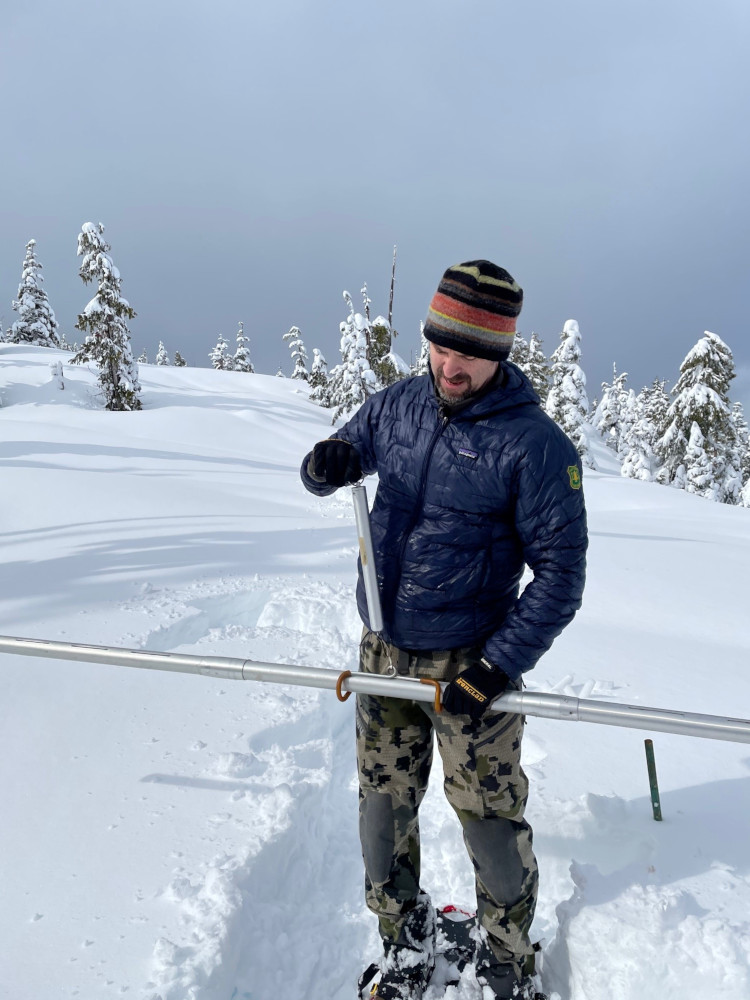
A cooler than normal month of March meant more snow for the Petersburg area, adding some high snowpack amounts on the mountains of central Southeast Alaska this winter.
Petersburg saw an average temperature in March of 33.8 degrees, a couple degrees below normal, which is around 36 degrees. It was pretty close to normal for rainfall last month but the amount of snow was well above normal. With lower temperatures, more of the precipitation that did fall came in the form of snow.
“We were well above normal where Petersburg at the airport received 28.6 inches, which is 169 percent of the normal, which is 16.9 (inches),” said Caleb Cravens, a meteorologist with the National Weather Service in Juneau. “So as most of you know that live there in Petersburg, it was a pretty snowy month.”
It’s also been a snowy winter overall and that’s meant a growing snowpack at higher elevations. The U.S. Forest Service reports monthly snow depth at two spots near Petersburg. At one site near the smaller of the community’s two reservoirs at 550 feet, the depth in early April was just over 50 inches. That’s 263 percent of the average and the fifth highest in the past 41 years. Higher up on Ravens Ridge at 1650 feet, the depth was 141.5 inches. That’s 191 percent of the average and it’s second only to the record setting year of 2007. That year saw a reading of 168 inches, tops for the 43 years of data. Both sites showed a higher than normal amount of water in the snow this year as well.
It hasn’t just been Petersburg either. Cravens said it’s been a good year for snow, at least for part of the region.
“We’re seeing pretty good snow packs from the central panhandle and the northern panhandle,” he said. “The southern panhandle wasn’t as impressive as is expected but the central and northern, most sites saw a good amount of snow.”
It will mean higher stream, reservoir and lake levels as that snow melts this spring and summer. And its good news for generation of hydroelectricity from water stored in mountaintop lakes. Petersburg borough manager Steve Giesbrecht reported to the borough assembly Monday on the snow amounts above Tyee Lake near Wrangell, one of Petersburg’s electrical sources.
“Snow pack is excellent with the equivalent of approximately 90 feet lake level water on the mountainside at Tyee and it’s still increasing,” Giesbrecht said.
The region was in an extended drought with low snow pack in 2018 and much of 2019. It forced a switch to diesel generation for Petersburg, Wrangell and Ketchikan two years ago at this time.










